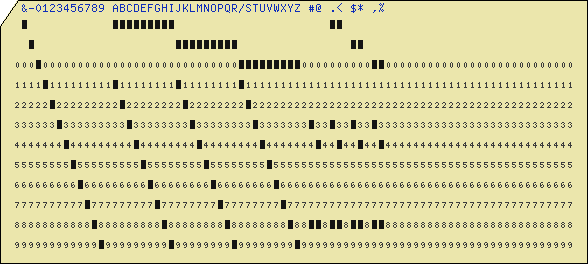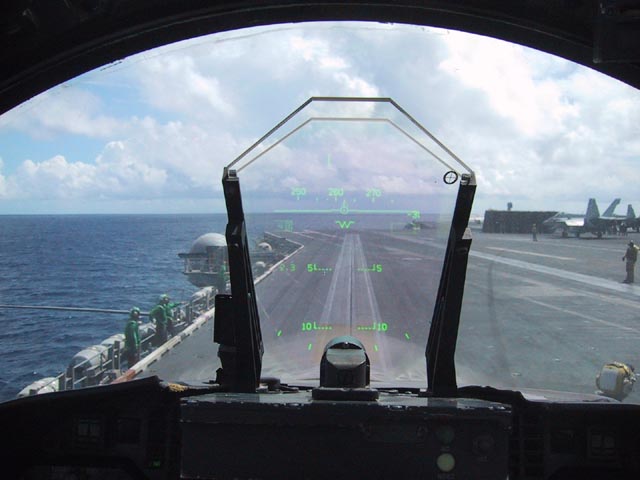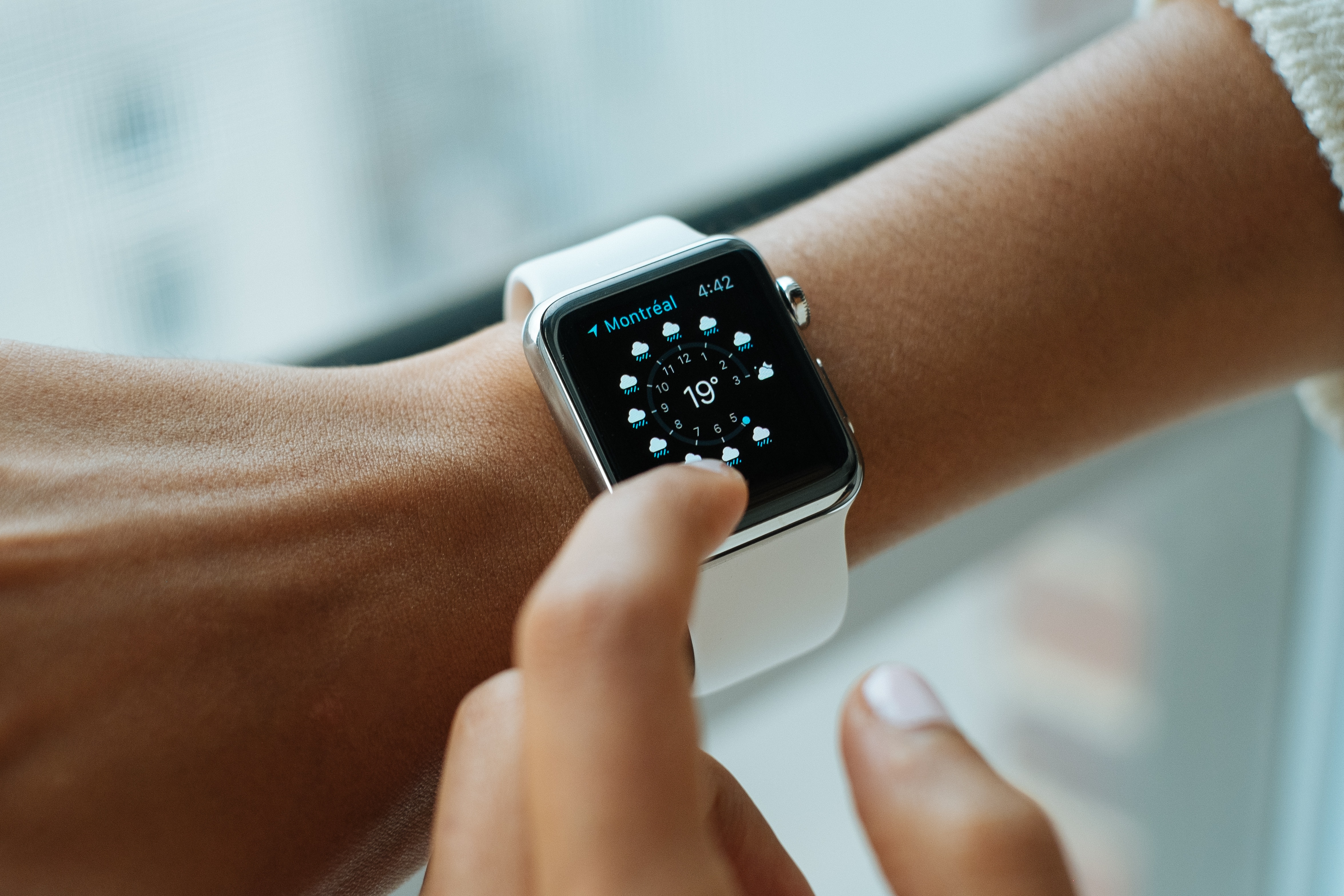|
Keyer
A keyer is a device for signaling by hand, by way of pressing one or more switches. Modern keyers typically have a large number of switches but not as many as a full-size keyboard; typically between four and fifty. A keyer differs from a keyboard in the sense that it lacks a traditional "board"; the keys are arranged in a cluster which is often held in the hand. An example of a very simple keyer is a single telegraph key which used for keying Morse code. In such a use, the term "to key" typically means to turn on and off a carrier wave. For example, it is said that one "keys the transmitter" by interrupting some stage of the amplification of a transmitter with a telegraph key. Morse code was an early form of serial communication, which in modern times is usually automated. In a completely automated teleprinter system, the sender presses keys to send a character data stream to a receiver, and computation alleviates the need for timing to be done by the human operator. In this way ... [...More Info...] [...Related Items...] OR: [Wikipedia] [Google] [Baidu] |
Telegraph Key
A telegraph key is a specialized electrical switch used by a trained operator to transmit text messages in Morse code in a telegraphy system. Keys are used in all forms of electrical telegraph systems, including landline (also called wire) telegraphy and radio (also called wireless) telegraphy. An operator uses the telegraph key to send electrical pulses (or in the case of modern CW, unmodulated radio waves) of two different lengths: short pulses, called ''dots'' or ''dits'', and longer pulses, called ''dashes'' or ''dahs''. These pulses encode the letters and other characters that spell out the message. Types Since its original inception, the telegraph key's design has developed such that there are now multiple types of keys. Straight keys A ''straight key'' is the common telegraph key as seen in various movies. It is a simple bar with a knob on top and an electrical contact underneath. When the bar is pressed down against spring tension, it makes a closed electric circ ... [...More Info...] [...Related Items...] OR: [Wikipedia] [Google] [Baidu] |
Chorded Keyboard
A keyset or chorded keyboard (also called a chorded keyset, ''chord keyboard'' or ''chording keyboard'') is a computer input device that allows the user to enter characters or commands formed by pressing several keys together, like playing a "chord" on a piano. The large number of combinations available from a small number of keys allows text or commands to be entered with one hand, leaving the other hand free. A secondary advantage is that it can be built into a device (such as a pocket-sized computer or a bicycle handlebar) that is too small to contain a normal-sized keyboard. A chorded keyboard minus the board, typically designed to be used while held in the hand, is called a keyer. Douglas Engelbart introduced the chorded keyset as a computer interface in 1968 at what is often called " The Mother of All Demos". Principles of operation Each key is mapped to a number and then can be mapped to a corresponding letter or command. By pressing two or more keys together the user ... [...More Info...] [...Related Items...] OR: [Wikipedia] [Google] [Baidu] |
QWERTY
QWERTY () is a keyboard layout for Latin-script alphabets. The name comes from the order of the first six keys on the top left letter row of the keyboard ( ). The QWERTY design is based on a layout created for the Sholes and Glidden typewriter and sold to E. Remington and Sons in 1873. It became popular with the success of the Remington No. 2 of 1878, and remains in ubiquitous use. History The QWERTY layout was devised and created in the early 1870s by Christopher Latham Sholes, a newspaper editor and printer who lived in Kenosha, Wisconsin. In October 1867, Sholes filed a patent application for his early writing machine he developed with the assistance of his friends Carlos Glidden and Samuel W. Soulé. The first model constructed by Sholes used a piano-like keyboard with two rows of characters arranged alphabetically as shown below: - 3 5 7 9 N O P Q R S T U V W X Y Z 2 4 6 8 . A B C D E F G H I J K L M Sholes struggled for the next five years to perfect his ... [...More Info...] [...Related Items...] OR: [Wikipedia] [Google] [Baidu] |
Backpack
A backpack—also called knapsack, schoolbag, rucksack, rucksac, pack, sackpack, booksack, bookbag or backsack—is, in its simplest frameless form, a fabric sack carried on one's back and secured with two straps that go over the shoulders, but it can have an external frame, internal frame, and there are bodypacks. Backpacks are commonly used by hikers and students, and are often preferred to handbags for carrying heavy loads or carrying any sort of equipment, because of the limited capacity to carry heavy weights for long periods of time in the hands. Large backpacks, used to carry loads over , as well as smaller sports backpacks (e.g. running, cycling, hiking and hydration), usually offload the largest part (up to about 90%) of their weight onto padded hip belts, leaving the shoulder straps mainly for stabilising the load. This improves the potential to carry heavy loads, as the hips are stronger than the shoulders, and also increases agility and balance, since the load ... [...More Info...] [...Related Items...] OR: [Wikipedia] [Google] [Baidu] |
Computational Photography
Computational photography refers to digital image capture and processing techniques that use digital computation instead of optical processes. Computational photography can improve the capabilities of a camera, or introduce features that were not possible at all with film based photography, or reduce the cost or size of camera elements. Examples of computational photography include in-camera computation of digital panoramas, high-dynamic-range images, and light field cameras. Light field cameras use novel optical elements to capture three dimensional scene information which can then be used to produce 3D images, enhanced depth-of-field, and selective de-focusing (or "post focus"). Enhanced depth-of-field reduces the need for mechanical focusing systems. All of these features use computational imaging techniques. The definition of computational photography has evolved to cover a number of subject areas in computer graphics, computer vision, and applied optics. These areas are ... [...More Info...] [...Related Items...] OR: [Wikipedia] [Google] [Baidu] |
Steven K
Stephen or Steven is a common English first name. It is particularly significant to Christians, as it belonged to Saint Stephen ( grc-gre, Στέφανος ), an early disciple and deacon who, according to the Book of Acts, was stoned to death; he is widely regarded as the first martyr (or "protomartyr") of the Christian Church. In English, Stephen is most commonly pronounced as ' (). The name, in both the forms Stephen and Steven, is often shortened to Steve or Stevie. The spelling as Stephen can also be pronounced which is from the Greek original version, Stephanos. In English, the female version of the name is Stephanie. Many surnames are derived from the first name, including Stephens, Stevens, Stephenson, and Stevenson, all of which mean "Stephen's (son)". In modern times the name has sometimes been given with intentionally non-standard spelling, such as Stevan or Stevon. A common variant of the name used in English is Stephan ; related names that have found some curre ... [...More Info...] [...Related Items...] OR: [Wikipedia] [Google] [Baidu] |
Heads-up Display
A head-up display, or heads-up display, also known as a HUD (), is any transparent display that presents data without requiring users to look away from their usual viewpoints. The origin of the name stems from a pilot being able to view information with the head positioned "up" and looking forward, instead of angled down looking at lower instruments. A HUD also has the advantage that the pilot's eyes do not need to refocus to view the outside after looking at the optically nearer instruments. Although they were initially developed for military aviation, HUDs are now used in commercial aircraft, automobiles, and other (mostly professional) applications. Head-up displays were a precursor technology to augmented reality (AR), incorporating a subset of the features needed for the full AR experience, but lacking the necessary registration and tracking between the virtual content and the user's real-world environment. Overview A typical HUD contains three primary components: a ... [...More Info...] [...Related Items...] OR: [Wikipedia] [Google] [Baidu] |
Cycling
Cycling, also, when on a two-wheeled bicycle, called bicycling or biking, is the use of cycles for transport, recreation, exercise or sport. People engaged in cycling are referred to as "cyclists", "bicyclists", or "bikers". Apart from two-wheeled bicycles, "cycling" also includes the riding of unicycles, tricycles, quadricycles, recumbent and similar human-powered vehicles (HPVs). Bicycles were introduced in the 19th century and now number approximately one billion worldwide. They are the principal means of transportation in many parts of the world, especially in densely populated European cities. Cycling is widely regarded as an effective and efficient mode of transportation optimal for short to moderate distances. Bicycles provide numerous possible benefits in comparison with motor vehicles, including the sustained physical exercise involved in cycling, easier parking, increased maneuverability, and access to roads, bike paths and rural trails. Cycling also offers ... [...More Info...] [...Related Items...] OR: [Wikipedia] [Google] [Baidu] |
Wearable Computing
A wearable computer, also known as a body-borne computer, is a computing device worn on the body. The definition of 'wearable computer' may be narrow or broad, extending to smartphones or even ordinary wristwatches. Wearables may be for general use, in which case they are just a particularly small example of mobile computing. Alternatively, they may be for specialized purposes such as fitness trackers. They may incorporate special sensors such as accelerometers, heart rate monitors, or on the more advanced side, electrocardiogram (ECG) and blood oxygen saturation (SpO2) monitors. Under the definition of wearable computers, we also include novel user interfaces such as Google Glass, an optical head-mounted display controlled by gestures. It may be that specialized wearables will evolve into general all-in-one devices, as happened with the convergence of PDAs and mobile phones into smartphones. Wearables are typically worn on the wrist (e.g. fitness trackers), hung from the n ... [...More Info...] [...Related Items...] OR: [Wikipedia] [Google] [Baidu] |
Steve Mann (inventor)
William Stephen George Mann (born 8 June 1962) is a Canadian engineer, professor, and inventor who works in augmented reality, computational photography, particularly wearable computing, and high-dynamic-range imaging. Mann is sometimes labeled the "Father of Wearable Computing" for early inventions and continuing contributions to the field.Tech Giant "Father of Wearable Tech" Steve Mann "Goes for The Ride" to YYD ROBO!, YYD Corporate News, 2017-07-31"Father of Wearable Computing, Steve Mann, to Keynote FITC Wearables", by Nikolas Badminton, 2014-11-11, Toronto, Medium He cofounded InteraXon, makers of the Muse brain-sensing headband, and is also a founding member of the IEEE Council on Extended Intelligence (CXI). Mann is currently CTO and cofounder at Blueberry X Technologies and Chairman of MannLab. Mann was born in Canada, and currently lives in Toronto, Canada, with his wife and two children. Early life and education Mann holds a PhD in Media Arts and Sciences (1997) from t ... [...More Info...] [...Related Items...] OR: [Wikipedia] [Google] [Baidu] |





